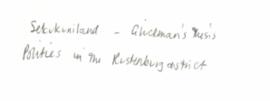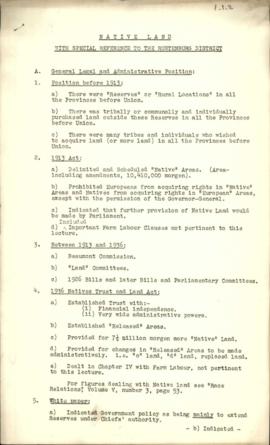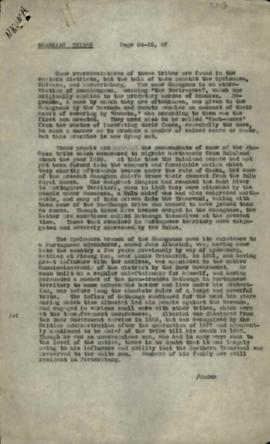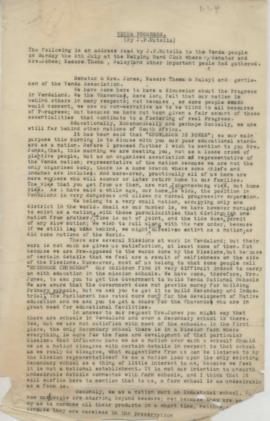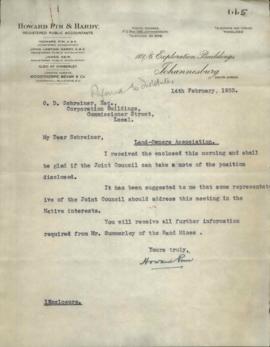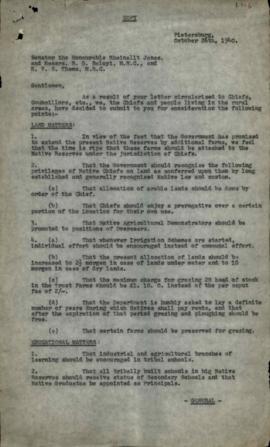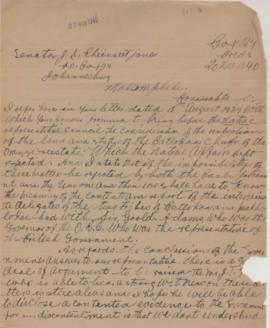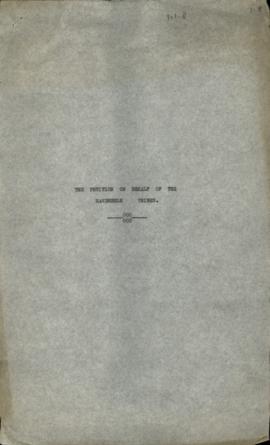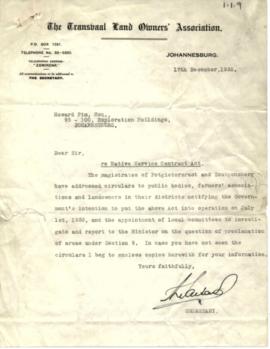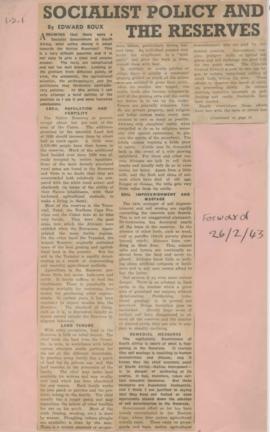Área de identidad
Código de referencia
Título
Fecha(s)
- 1892-1974 (Creación)
Nivel de descripción
Fondo
Volumen y soporte
56 boxes
Área de contexto
Nombre del productor
Historia administrativa
After the formation of the Union of South Africa in 1910, legislation was enacted which discriminated against the non-White section of the population and increased the racial segregation existing at the time of Union. This angered many Blacks and caused a series of strikes by Black workers. By the 1920s responsible Europeans, particularly churchmen, saw the importance of bringing the races together. Native Welfare Societies, consisting of liberal and philanthropic Europeans, were founded which in due course were replaced by Joint Councils, inter-racial in character.
The Joint Council movement was largely the inspiration of Dr. Thomas Jesse Jones and Dr. J.E.K. Aggrey who in 1921 conducted a study tour of education in South Africa on behalf of the Phelps-Stokes Fund of the United States of America. They had seen the value of inter-racial councils in America and persuaded Dr. C.T. Loram, Chief Inspector of Education in Natal, and his friend J. D. Rheinallt Jones, Secretary of the Witwatersrand Council of Education, to establish a multi-racial organisation with the aim of promoting understanding and goodwill between the races. Rheinallt Jones founded the first Joint Council of Europeans and Africans in Johannesburg in 1921 and by 1931 there were in existence thirty European-African Joint Councils' three European-Indian Joint Councils and a European-Coloured Joint Council was in the process of formation. In all eighty Joint Councils were established, many of them continuing to exist side by side with the Institute of Race Relations after it was founded in 1929. By 1951 only two Joint Councils remained, of which only one was active.
During visits to South Africa in the 1920s Dr. Jesse Jones convinced Rheinallt Jones of the need to set up a national body to centralise interracial activities. The project was made possible by finance from the Phelps-Stokes Fund and the Carnegie Corporation. Rheinallt Jones convened an inter-racial conference in Cape Town in January 1929 which revealed enthusiasm for a national organisation. He called together a committee of seven prominent South Africans not connected with any political party - E.H. Brookes, Professor J. du Plessis, Professor D.D.T. Jabavu, Dr. C.T. Loram, T.W. Mackenzie, J.H. Nicholson and J.H. Pim. They met on 9 May 1929 at the house of the Rev. Dr. R.E. Phillips in Johannesburg, resolved to fern a South African Institute of Race Relations and elected C.T. Loram chairman Howard Pim treasurer and Rheinallt Jones secretary.
With the deaths of Mackenzie end Nicholson and the transfer of Loram to a professorial chair at Yale, the Committee was reduced to six but in 1930 Dr. J.G. van der Horst was added and in 1931 Professor R.F.A. Hoernle, Leo Marquard and Senator Lewis Byron. These ten committee members are regarded as the foundation members of the Institute.
Institución archivística
Historia archivística
Origen del ingreso o transferencia
Área de contenido y estructura
Alcance y contenido
This collection comprises an assortment of Rheinhallt Jones and SAIRR papers, and complements and supplements other records of the Institute housed at Wits.
Again the emphasis is on 'Native Affairs' and 'race relations' in the broadest sense, primarily from the mid 1930's to 1950's. Section 5 - 'Administration of Africans' is particularly rich in this respect.
Valorización, destrucción y programación
Acumulaciones
Sistema de arreglo
The papers have been sorted into thirty-six categories. However, because of the diversity, or generalised nature, of some of the material, fairly arbitrary categorization of material was unavoidable.
Área de condiciones de acceso y uso
Condiciones de acceso
Condiciones
Idioma del material
Escritura del material
Notas sobre las lenguas y escrituras
Características físicas y requisitos técnicos
Please note: Some documents have been badly damaged prior to digitisation or are of poor quality.


